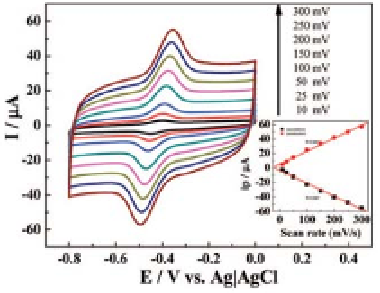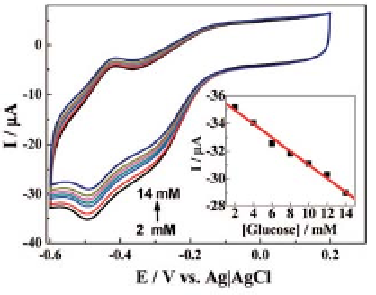Biomedical Engineering Reference
In-Depth Information
electron transfer, one of the most fundamental chemical processes
across the interfaces. It will promote both fundamental electron
transfer research such as in biological and artificial membrane and
homo/heterogeneous catalysis. For example, it indicated SWNTs
accelerated the electron transfer at water/oil interface by using
scanning electrochemical microscopy (Fig. 4.15).
(a)
(b)
Cyclic voltammetric measurements at GCE/graphene-IL-
GOD electrode in 0.05 M N
Figure 4.16
saturated PBS solution at different scan rates.
Scan rate: 0.02, 0.05, 0.1, 0.15, 0.2 V s
2
from inner to outer. Inserted is
the calibrated plot of peak currents versus scan rates (a) (reprinted from
Biosens
-1
, Zhang, Y., Shen, Y., Han, D., Wang, Z., Song, J., Li, F., and
Niu, L., Carbon nanotubes and glucose oxidase bionanocomposite bridged
by ionic liquid-like unit: Preparation and electrochemical properties,
438-443, copyright 2007, with permission from Elsevier). Cyclic
voltammetric curves at the GCE/graphene-IL-GOD electrode in various
concentrations (2, 4, 6, 8, 10, 12, and 14 mM) of glucose PBS solution
saturated with O
.
Bioelectron
.,
23
= 0.994) corresponding
to amperometric responses at -0.49 V. Scan rate: 0.05 V s
. The inset is the calibration curve (
R
2
(b) (reprinted
with permission from Ref. [60], copyright 2009 American Chemical Society).
-1










Search WWH ::

Custom Search